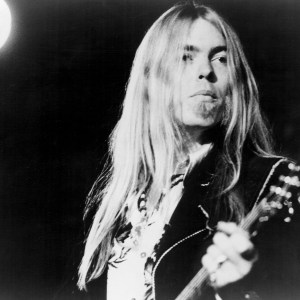It won't make you sweat, and it will definitely make you groove.
American Songwriter may earn a commission when you purchase through our links.
Isn’t the internet wonderful? Well…Sometimes. But it sure is great for getting the answers to questions and quandaries past generations could only speculate about. Like this one: how in the world did Jimmy Page get that distortion sound on classic Zeppelin tracks like “Black Dog?”
‘70s and ‘80s kids agonized over their Crate and Peavey practice amps, twisting the knobs this way and that, maybe hooking up a Tube Screamer if they were lucky, trying to access that particular crunchy, fuzzy distortion tone. And they would have gotten nowhere near it.
Even early-2000s kids like me, despite having Line 6 Spiders, or maybe even pedalboards equipped with the best overdrive pedals of the day (I did not), wouldn’t have gotten close. Because we simply did not know how. Maybe there was an expensive coffee table book that laid out Led Zeppelin’s recording secrets, but if there was, I never saw it (despite frequenting that section of my local Borders).
Today, on the other hand, with our endless feeds, we receive almost too much information—so much, in fact, that most of it tends to go in one ear and out the other. But some information is potent enough to pique our interest and justify a click, even instigating a full-on rabbit hole at times. I'm talking about information like: how to (finally) get Jimmy Page’s distortion tone.
So when I came across this article on Universal Audio’s blog, I just had to try it for myself. I reached out to my good friends at Universal Audio, and before I knew it, I had their UAFX 1176 Studio Compressor pedal in my hands, along with a comprehensive plugin suite including their 1176LN Limiting Amplifier.
There are a few ways to get this effect, and I’ll walk you through how I did it below. Read on to learn how to get Jimmy Page’s “Black Dog” distortion tone for yourself using UA’s various 1176 Studio Compressor products.
But First: What is Compression?
Ah, the age-old question—what is compression anyway? It’s among the more subtle effects, to be sure—one that often might not really even be noticed by untrained ears. So I’ll do my best to provide a quick and easy layman’s definition.
Basically, compression is the “squashing” or “flattening” of any electronic signal, be it a miked voice or drumset, or a DI’d electric guitar. It shaves off the peaks and valleys of the waveform, making the quiet parts louder and the loud parts quieter, so the signal comes across at a consistent volume. It’s how you’re able to hear the lead singer’s faintest whisper in one passage, and their most ear-splitting yowl in the next, all at a relatively consistent volume.
But the distortion “trick” I’m going to show you has as much to do with the gain, or input/output knobs, of the 1176LN Limiting Amplifier as it does its compression function.
About the Universal Audio 1176LN Limiting Amplifier
Universal Audio’s 1176LN Limiting Amplifier is about as legendary a piece of studio equipment as can be. Developed in 1967 by UA founder/engineer Bill Putnam, it was devised as a solid-state upgrade to the tube-powered 176 and was an instant hit due to its super-fast attack, harmonious tone, and distinctive “hot” quality that it lends to anything you put through it.
How Page Got His Sound
Here’s the scoop, if you haven’t guessed it by now: the way Jimmy Page was able to get his iconically crunchy, super-smooshed guitar tone on “Black Dog” had nothing to do with a guitar amp or fuzz pedal.
Instead, he stacked two 1176LNs on top of each other (in his signal chain, not literally—although, maybe…). The first 1176LN was strictly for gain. With the input knob cranked, and compression switched off entirely, Page plugged his guitar directly into the unit for a crunchy, honestly kind of terrible-sounding distortion. But then, the second amplifier in the signal chain provided compression, which gave the tone a “squishier,” more musical sound, and a more guitar amp-like feel (a tube amp creates natural compression on a guitar signal).
Double- or triple-track guitars, double the part on bass, and there it was: the guitar sound you hear on “Black Dog.”
How to Get Jimmy Page's "Black Dog" Tone—No Studio Required
The original rackmount 1176LN is still commercially available, a studio staple to this day. But unless you’re operating a commercially profitable studio (kudos to you, if so), it’s hard to wrap your head around the notion of spending $3000 on a piece of studio hardware, let alone two of them!
That’s why the brilliant minds at Universal Audio decided to bless us with much more affordable alternatives to the hardware 1176LN. Perfect for getting premium studio sounds on a tight budget, UA’s 1176LN plugin and 1176 Studio Compressor pedal are a revelation for anyone looking to add classic tone, warmth, and oomph to their recordings and live sound—or just aiming for Jimmy Page's "Black Dog" tone.
The easiest way I found to get the “Black Dog” tone (and I was SHOCKED at how easy this was) is to literally just buy a UAFX Studio Compressor pedal. Yep, that’s it.
Quick Overview
That’s because UA designed the pedal with a special dual circuit switch that allows you to effectively double the signal, more or less equating the effect of lining up two 1176LNs back-to-back just like Page did. It’s a really useful pedal, capable of faithfully emulating the iconic rackmount 1176 in all its versatile glory. Clean compression, sustain, and a light boost are all par for the course here. But switch to Dual mode and you’ve got the “Black Dog” crunch tone at your fingertips.

The other way, which doesn’t require any hardware at all, is to download UAD’s 1176 Classic Limiter Collection. Once you add the plugin to your DAW, it’s pretty straightforward. Engage two 1176LNs in your signal chain, replicate Page’s settings (roughly, input cranked and attack off on the first, attack and release cranked on the second), and you’re pretty much there. Bonus points for throwing a classic reverb and one of UAD’s analog tape machines in the chain as well.
Quick Overview
As always, I had so much fun playing around with the settings on the 1176LN, plus adding different combinations of other UAD plugins to get the sound just right, and you will too. It’s well worth grabbing one of their bundles, like the Essentials Edition, which will give you a ton of options for cool vintage recording sounds that you’ve heard on all your favorite classic records.
Check out the video to watch Universal Audio's James Santiago and guitarist Rhett Shull show you how to get Jimmy Page's distortion tone on real 1176s at UA's HQ.




Comments
Loading…